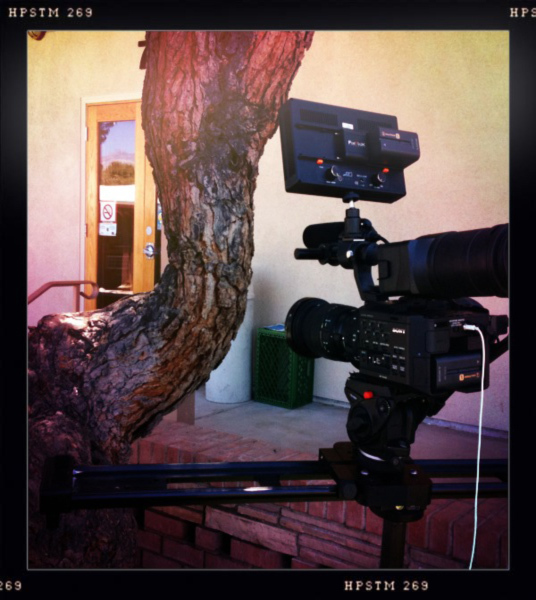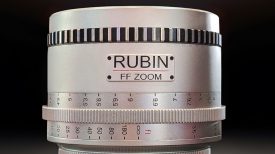Guest post by W. Ashley Maddox
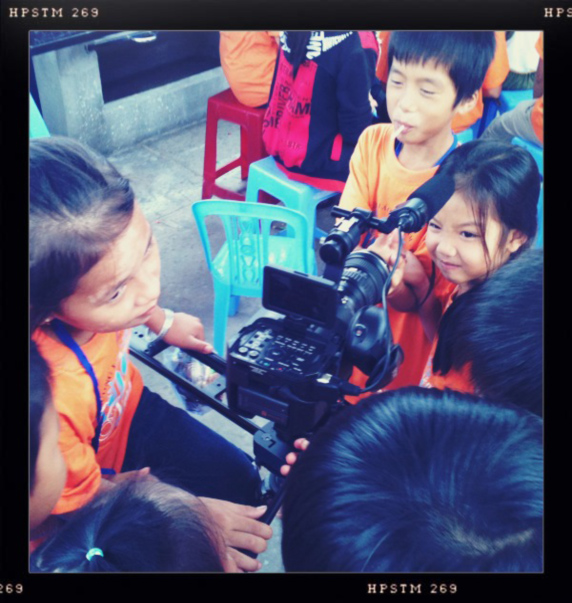
I come from a background of using the Canon 5D mkII and 7D for most of my productions. In June 2009 I DP’d my first feature film, shot on three 5D cameras. I have not looked back since. When the FS100 was announced it was the right time for a change. This article is about what the FS100 is like in the real world, or rather, how I use it in my everyday life.
I use the camera in three main areas: short form projects, live capture and wedding films. Since I usually work by myself I need a camera that records over an hour at a time, is lightweight, has audio integrated into the camera and has a large 35mm sensor for more artistic shots. The FS100 does all these things and was within my budget. So, what’s to like about this camera?
– Super 35mm Sensor: When doing video it’s nice to know I can get great looking shots and not have to rack focus everything (unlike the 5D full frame sensor).
– Low light: I am super impressed with the lowlight on this camera. It’s incredibly clean. At +30db gain (16,000 ISO) it has about the same noise as the Canon 7D at 1600 ISO.
– Optional 128GB SSD Hard Drive: I can get over 450 minutes continuous recording at the 28mb/s 1080p 24fps rate and over 1100 minutes at the lower LP1080i rate.
– Audio built in: This is only a big deal to me since I had been working with HDSLR in the past. It is so nice now to record audio in camera and not have to worry about needing a work-around or a special audio cable. With the FS100 it’s a direct connection from the XLR mic to the camera.
– S&Q: Slow motion at 1080P is amazing. No moiré or weird artifacts, just beautiful 60 frames per second slow motion.
– Peaking & Zebras: Great video tools.
Real World Use
Short form videos: I love the ability to get great out of focus background when using this camera for short form videos. I have the flexibility to add different lenses from the Canon 50mm f1.2L to a Tokina 11-16mm. I travel a lot for different non-profits and Christian organizations. Having the audio built into the camera, instead of having to record separately then link later in post, is a real time and money saver for the client.
The camera is nice to travel with. This past summer I went to Thailand, Malaysia and Vietnam with the camera and the ease of travel was the same as traveling with a DSLR if not better. The FS100 still fits into the same DSLR bag that I travel with. As I no longer need external audio recorders or loupe viewfinders, I was able to bring a couple of extra lenses in my camera bag. Standard kit for traveling is as follows: Canon 17-55mm f2.8, 28mm f1.8, 100mm 2.8 macro ,Tokina 11-16mm f2.8, Zeiss ZE 50mm & 85mm f1.4 and a pair of 312 LED Lights. I also bring along a Kessler Pocketdolly, two Vari-ND filters and adapter rings to fit all lenses.
Live Events: Each week I film the message and lectures given at the church I work at and send a live feed out to a TV in the lobby. This is perfect for recording in HD then quickly uploading for same day delivery to Vimeo or YouTube. No need to do color correction in this scenario. I “bake in” a Picture profile, add some titles in post, then upload. I use the standard Sony 18-200mm kit lens because it has the image stabilizer in it and shooting at f5.6 aperture keeps it mostly in focus which is what I want in this kind of video.
Wedding Films: I am still amazed at the ability to color correct the AVCHD 28/mbs codec and the camera’s low light feature. The low lighting of wedding receptions can be a real pain. I don’t like to bring in external lights that I have to plug in – mainly for safety reasons and because it can bring too much attention to the filming. I was surprised with the FS100 at how I don’t need that much light. I bring two 312 LED battery-powered dimmable lights, one on a stand in the corner and one on camera. I put the on-camera light at about 30-40% as it works perfectly for a bit of fill. I found that editing is easier (and more enjoyable) than the HDSLR footage. The codec seems to edit better than the H.264 – I can edit right out of the camera instead of having to transfer footage to Prores first. This reduces my editing time and allows me to focus more on the story, color correction and/or post effects. I usually shoot with a Picture Profile that is close to Abel Cine’s Canon Standard Look emulation. The codec still gives me some latitude to color correct and makes the edit quick.
Standard kit for a one-camera wedding: Canon 70-200mm (Ceremony only) 17-55mm 2.8, 50mm 1.4, 28mm 1.8, and the Tokina 11-16. (2) 312 LED Lights. I also bring along a Kessler Pocketdolly.
Things I miss from DSLR: With the FS100 I miss taking RAW photos. It was great to be on location and to snap a photo of the subject for later use. I can still screen grab with the FS100 footage and get a great looking still for web, but not for print.
What Adapter do I use with your Canon lenses?
This is the most common question I get. I use the standard non-electronic Fotodiox EOS-NEX adapter found on Ebay or Amazon and just recently got the Metabones electronic EOS-NEX adapter (version 2). I have also used Sony Alpha lenses with an LA-EA1 Alpha to E-mount adapter.
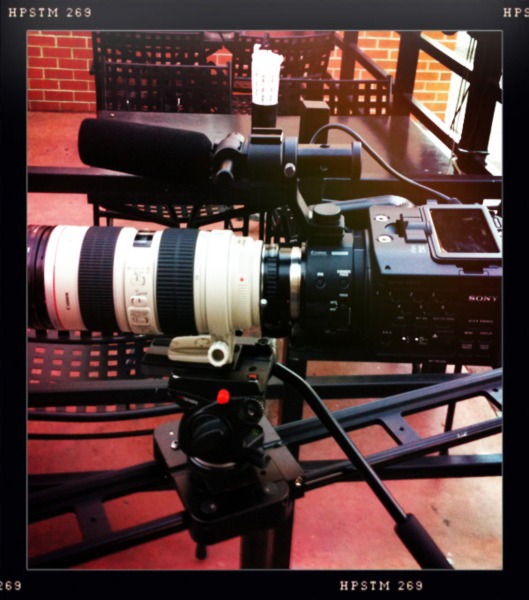
The Metabones mount works on all my Canon lenses. The image stabilizer works great on my 70-200mm, 100mm, & 17-55mm lenses. It’s really a game changer for this camera. I love it. The only drawback is the build. It seems robust but the screws became unthreaded. I have since put longer screws in the adapter.
Solid Camera Inc. is also working on a Canon to NEX adapter with ND filters built in and I think it will be able to adjust the aperture electronically as well. I’m excited about that but it looks to be months before it is available. I asked for a prototype to test for this article but as of February 2012 they didn’t have any. Birger Engineering is also threatening to come out with an adapter but they have been saying that for ages.
Below are my findings on adapters that I have used and what works:
Lenses I’ve used with the FS100 and a Sony LA-EA1 Alpha Adapter:
Sigma 17-50mm f2.8 – This is a great lens. I love the sharpness and the image stabilization. But the focus is very difficult to use. It is sticky and the focus pull range is very small. I would like to test the Tamron 17-50mm f2.8 but there is no IS on the Alpha mount version.
Sigma 70-200mm f2.8 – Sharp optics, bad focusing ring and the IS is not very helpful for video. I would stay away from this lens.
Tokina 11-16mm f2.8 – Great lens. Enough said.
Sigma 85mm 1.4 – Sharp optics but a bad focus ring as with the 17-50mm.
Sony/Zeiss 85mm 1.4 – Sharp optics, GREAT focus ring. A fun lens.
Sigma 30mm 1.4 – Sharp lens and a very smooth manual focus ring. I wish Sigma used this ring on the rest of their lenses
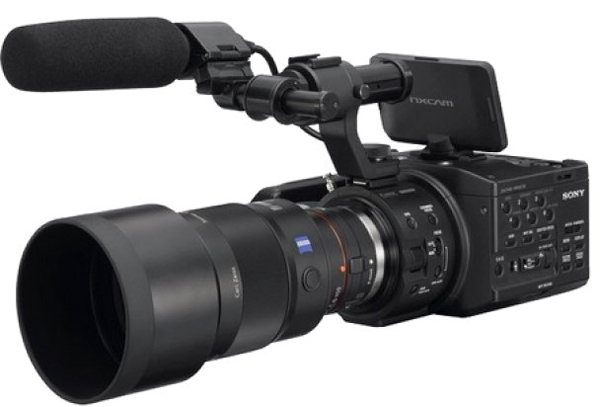
Lenses I’ve used with the FS100 and a Canon Metabones Adapter:
Canon 24-70mm f2.8L: Works with it. I rented this for a weekend and it made me appreciate the 17-55mm over it. I like the 17mm wide end of the 17-55mm better than the 24mm of the 24-70mm.
Canon 17-55mm f2.8: This is one of my favorite lenses. I like the range and the IS will work on it. It is not an L series so about every other month I need to remove the front element to clean it from dust!
Canon 70-200mm f2.8 L IS: Aperture control works and IS works but is a bit noisy. Nothing that I am annoyed about; it just makes a louder noise than if it was on a Canon camera. Focus is smooth and this is one of my favorite lenses.
Canon 50mm f1.4: Works; not very sharp at f1.4
Canon 28mm f1.8: Works and is very sharp. I am surprised by this lens.
Zeiss ZE 50mm & 85 mm 1.4 – Terrific lenses and super sharp compared to the Canon 50mm 1.4. I use these on most shoots.
My favorite set up
Right now I use a DP4 mini monitor from SmallHD. This has a viewfinder adapter on it that turns it into an EVF. I find that the stock viewfinder is OK but the DP4 is much better. I also use the Kessler Pocketdolly which is a great tool, although at times I’m sure I’m accused of using it too much. I just love the look of adding a bit of movement to an otherwise stale shot. I use a Gitzo graphite tripod and a Manfrotto 503 fluid head.
Bottom line
The FS100 is a great multipurpose camera especially if you need a camera RIGHT NOW. I believe that it will last me a lot longer than my first Sony EX1 because it’s a switchblade of a camera, great for any production. If I could improve the camera at all it would be to put the screen on the side of the camera rather than on top and to add a proper Canon EF lens mount option.

